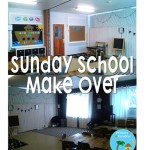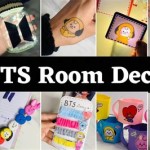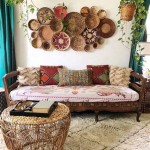Kids Bedroom Decor Items: Creating a Functional and Inspiring Space
A child's bedroom is more than just a place to sleep; it is a sanctuary for imagination, learning, and personal growth. Carefully chosen decor items can transform a standard room into a personalized haven that fosters creativity and encourages a sense of ownership and comfort. Selecting the right elements requires consideration of age, interests, and the functional needs of the child, along with an understanding of design principles that promote a harmonious and stimulating environment. This article will explore essential kid's bedroom decor items, focusing on key considerations for creating a space that is both aesthetically pleasing and practically beneficial.
Bedding and Textiles: Comfort and Personality
Bedding is arguably the most prominent decor element in any bedroom, and for a child's room, it offers a significant opportunity to introduce color, themes, and personal style. The selection should start with the basics: a comfortable mattress, supportive pillows, and hypoallergenic protectors to ensure a healthy sleep environment. Sheets, blankets, and comforters or duvet covers then layer upon this foundation, offering a chance to inject personality.
Consider the material of the bedding. Natural fibers like cotton are breathable and gentle on sensitive skin, while microfiber options are often more durable and stain-resistant, a practical choice for younger children. The thread count of the sheets can influence their softness and longevity; aim for a balance between comfort and durability. Color and pattern choices are vast, ranging from solid colors that allow for easy coordination with other decor to themed designs featuring popular characters, animals, or hobbies. Involving the child in the selection process can foster a sense of ownership and excitement about their room.
Beyond the bed itself, textiles play a crucial role in adding warmth and texture to the space. Rugs define areas within the room, providing a soft surface for play and contributing to noise reduction. Opt for rugs that are easy to clean and stain-resistant, particularly in high-traffic areas. Curtains or blinds control light levels and provide privacy. Blackout curtains are beneficial for promoting better sleep, especially for children who are sensitive to light. Throw pillows and blankets add layers of comfort and visual interest, allowing for the introduction of different textures and patterns. Consider layering textures, such as a soft knit blanket, with a velvet pillow and a cotton rug, to create a visually rich and inviting space.
Storage Solutions: Organization and Functionality
Effective storage solutions are paramount in a child's bedroom, contributing to both aesthetics and functionality. A well-organized room promotes a sense of calm and order, making it easier for children to maintain their space and focus on activities. Storage solutions should be age-appropriate, accessible, and adaptable to changing needs. Consider a variety of options, including dressers, bookshelves, toy chests, and under-bed storage containers.
Dressers are essential for storing clothing, but consider the size and height to ensure that the child can easily access their belongings. Look for dressers with sturdy construction and safety features such as anti-tip devices. Bookshelves provide a place for books, toys, and decorative items. Shelves can be arranged by color, size, or type of item to create a visually appealing display. Toy chests offer a quick and easy way to store larger toys, but choose a chest with a soft-close hinge to prevent pinched fingers. Under-bed storage containers are ideal for storing seasonal clothing, extra bedding, or less frequently used toys. Clear containers allow for easy identification of the contents.
Beyond traditional furniture, consider incorporating creative and unconventional storage solutions. Wall-mounted shelves and organizers save floor space and add visual interest. Baskets and bins provide a flexible way to store smaller items and can be easily moved around the room. Hooks and pegs are useful for hanging coats, bags, and accessories. Encourage the child to participate in the organization process, teaching them valuable skills and fostering a sense of responsibility. Labeling storage containers with pictures or words can help younger children understand where things belong. A well-designed storage system should be both functional and aesthetically pleasing, blending seamlessly with the overall decor of the room.
Wall Decor: Art, Color, and Personalization
Wall decor plays a significant role in shaping the atmosphere of a child's bedroom, offering an opportunity to introduce color, patterns, and personal touches. The walls serve as a blank canvas for expressing creativity and reflecting the child's interests. Consider a variety of options, including paint, wallpaper, wall decals, and artwork.
Paint is the most fundamental element of wall decor. Choose colors that are calming and conducive to sleep, such as soft blues, greens, or neutrals. Accent walls can add visual interest and define different areas within the room. Consider using low-VOC or zero-VOC paints to minimize exposure to harmful chemicals. Wallpaper offers a wide range of patterns and textures, allowing for the creation of a more dynamic and personalized space. Consider using removable wallpaper for a less permanent option that can be easily changed as the child grows and their tastes evolve. Wall decals are a versatile and affordable way to add personality to the walls. They come in a variety of designs, from simple shapes and patterns to intricate murals featuring popular characters or themes. Decals are easy to apply and remove, making them a great option for renters or those who want to update the decor frequently.
Artwork adds a personal touch to the walls and can reflect the child's interests, hobbies, or artistic talents. Consider framing the child's own artwork or displaying prints of their favorite characters or animals. Wall tapestries offer a unique and textural element, adding warmth and visual interest to the space. Mirrors can make a small room feel larger and brighter. Consider incorporating a full-length mirror or a decorative mirror with a unique frame. Personalized wall decor, such as name banners, initial monograms, or photo collages, adds a sense of ownership and individuality to the room. Encourage the child to participate in the selection and arrangement of wall decor, fostering their creativity and self-expression. A well-curated collection of wall decor can transform a standard room into a personalized gallery that reflects the child's unique personality and interests.
Lighting: Functionality and Ambiance
Proper lighting is crucial for creating a functional and inviting atmosphere in a child's bedroom. Lighting should serve multiple purposes, providing adequate illumination for reading, playing, and completing homework, while also creating a calming ambiance for sleep. Consider a combination of ambient, task, and accent lighting to meet the diverse needs of the space.
Ambient lighting provides overall illumination for the room. A ceiling fixture, such as a chandelier or flush-mount light, is a common source of ambient lighting. Choose a fixture that is both stylish and functional, providing adequate light without being too harsh or glaring. Task lighting provides focused illumination for specific activities. A desk lamp is essential for homework and reading, while a bedside lamp offers a convenient source of light for bedtime stories or late-night reading. Choose lamps with adjustable arms and dimmer switches to customize the light level. Accent lighting highlights specific features in the room, such as artwork, bookshelves, or architectural details. String lights, fairy lights, or spotlights can add a touch of whimsy and create a cozy ambiance.
Consider the color temperature of the light bulbs. Warm light (2700-3000K) creates a cozy and inviting atmosphere, while cool light (4000-5000K) is more energizing and conducive to focus. Choose light bulbs with a high CRI (Color Rendering Index) to ensure that colors are accurately rendered. Dimmable light switches allow for greater control over the light level, creating a more versatile and adaptable space. Night lights provide a sense of security and comfort for children who are afraid of the dark. Choose a night light with a soft glow and a timer function. A well-designed lighting scheme should be both functional and aesthetically pleasing, creating a safe, comfortable, and inspiring environment for the child.
Furniture: Safety, Functionality, and Scalability
Selecting appropriate furniture for a child's bedroom requires careful consideration of safety, functionality, and scalability. Furniture should be sturdy, durable, and age-appropriate, meeting the evolving needs of the child as they grow. Prioritize safety features and opt for pieces that can be easily adapted or repurposed over time.
The bed is the centerpiece of the bedroom and should be chosen with safety and comfort in mind. Consider a bed frame with rounded edges and a low profile to minimize the risk of falls. Bunk beds are a space-saving option for shared rooms, but ensure that they meet safety standards and have sturdy guardrails and ladders. A desk provides a dedicated space for homework, art projects, and other activities. Choose a desk that is the appropriate height for the child and has ample storage for supplies. A comfortable chair is essential for supporting good posture while working at the desk. Consider an adjustable chair that can be customized to the child's height. A reading nook or lounge chair creates a cozy space for relaxation and reading. Choose a chair that is comfortable and supportive, with soft cushions and ample space to curl up. Storage furniture, such as dressers, bookshelves, and toy chests, should be chosen with safety and functionality in mind. Look for pieces with sturdy construction, smooth edges, and anti-tip devices.
Consider furniture that can be easily adapted or repurposed as the child grows. A crib that converts into a toddler bed and a full-size bed can save money and reduce waste. A changing table that converts into a dresser can be used for many years. Modular furniture systems offer flexibility and can be configured to meet changing needs. Choose furniture made from durable and sustainable materials, such as solid wood or recycled plastic. Avoid furniture with sharp edges, exposed hardware, or toxic finishes. Regularly inspect furniture for signs of wear and tear and make repairs as needed. A well-chosen collection of furniture should be both functional and safe, providing a comfortable and inspiring environment for the child to grow and learn.

Kids Room Decorating Ideas That Go From Toddler To Teen

Kids Room Decorating Ideas For Your Home Designcafe

Where The Wild Things Are 6 Kids Bedroom Decor Ideas Homes Interiors Scotland

70 Best Kids Bedroom Ideas For 2025

Top 10 Kids Bedroom Interior Design Ideas For 2025

14 Small Kids Room Design Ideas Storage Tips Extra Space

10 Decorating Ideas For Kids Rooms How To Decorate A Room

Toddler Bedroom Ideas 2025 Checkatrade

Small Kids Room Design Ideas Ashley

Trendy Kids Room Ideas On A Budget Life N Colors
Related Posts







